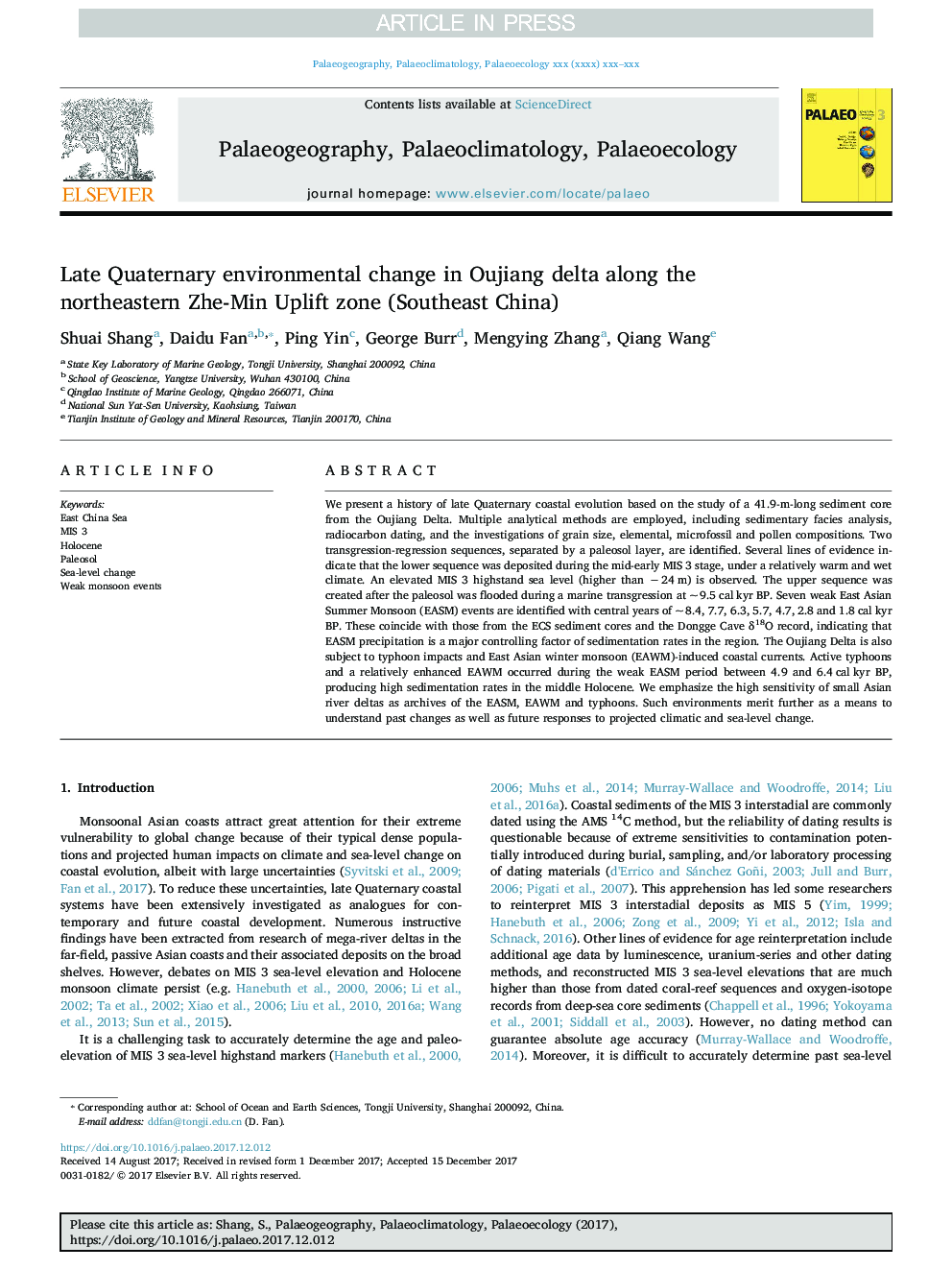| Article ID | Journal | Published Year | Pages | File Type |
|---|---|---|---|---|
| 8868394 | Palaeogeography, Palaeoclimatology, Palaeoecology | 2018 | 17 Pages |
Abstract
We present a history of late Quaternary coastal evolution based on the study of a 41.9-m-long sediment core from the Oujiang Delta. Multiple analytical methods are employed, including sedimentary facies analysis, radiocarbon dating, and the investigations of grain size, elemental, microfossil and pollen compositions. Two transgression-regression sequences, separated by a paleosol layer, are identified. Several lines of evidence indicate that the lower sequence was deposited during the mid-early MIS 3 stage, under a relatively warm and wet climate. An elevated MIS 3 highstand sea level (higher than â 24 m) is observed. The upper sequence was created after the paleosol was flooded during a marine transgression at ~ 9.5 cal kyr BP. Seven weak East Asian Summer Monsoon (EASM) events are identified with central years of ~ 8.4, 7.7, 6.3, 5.7, 4.7, 2.8 and 1.8 cal kyr BP. These coincide with those from the ECS sediment cores and the Dongge Cave δ18O record, indicating that EASM precipitation is a major controlling factor of sedimentation rates in the region. The Oujiang Delta is also subject to typhoon impacts and East Asian winter monsoon (EAWM)-induced coastal currents. Active typhoons and a relatively enhanced EAWM occurred during the weak EASM period between 4.9 and 6.4 cal kyr BP, producing high sedimentation rates in the middle Holocene. We emphasize the high sensitivity of small Asian river deltas as archives of the EASM, EAWM and typhoons. Such environments merit further as a means to understand past changes as well as future responses to projected climatic and sea-level change.
Related Topics
Physical Sciences and Engineering
Earth and Planetary Sciences
Earth-Surface Processes
Authors
Shuai Shang, Daidu Fan, Ping Yin, George Burr, Mengying Zhang, Qiang Wang,
